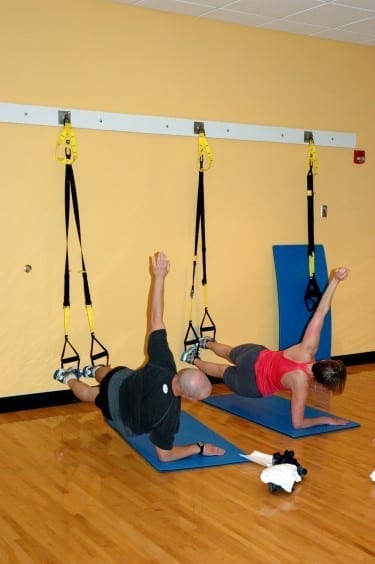
Get fit in just 30 minutes a day! Improve your health 10 minutes at a time! Those are not slogans from the latest fitness gimmick, but actual recommendations issued by the federal government to help Americans improve their health and prevent disease.
The biggest excuse for inactive people is that they don’t have the time to exercise. But the truth is it only takes a few hours per week to improve your overall health and fitness.
“The rule of thumb as promoted by major health groups is 150 minutes of moderate physical activity or 75 minutes of high intensity cardio each week,” says Joy Schiller, wellness director at Des Moines University.
Aerobic activity is such a normal part of your day, you may not even notice it. Anything that increases your heart rate and makes you breath heavy is considered aerobic. In fact, by walking, biking or dancing for just 10 minutes a few times a day, you can achieve the 30 minute goal.
Build muscle, lose weight
When people think about strength training, they picture muscle-bound men bulked up beyond belief. However, strength training is just as important in weight loss as cardio exercise.
“By lifting weights, you build lean muscle tissue, which raises your metabolism and reduces body fat,” explains Schiller. “Ideally, you want to have two 30-minute sessions of strength training each week that target the major muscle groups.”
Strength training doesn’t have to mean pumping iron. Push-ups, yoga, resistance bands and gardening are all ways to improve muscle strength. Picking out eight to 10 exercises that target the major muscle groups and doing eight to 12 repetitions of each will lead to results.
Stay flexible
Stretching is a crucial, yet often overlooked, piece of the fitness puzzle. While it’s not in the government’s guidelines, Schiller recommends two to three stretching sessions per week. It keeps the muscles and joints flexible and improves range of motion, helping to prevent injuries. Stretching also aids in post-workout recovery, raises energy levels and decreases soreness by circulating blood to the muscles.
Thirty minutes a day is all it takes, but many people still find it hard to carve out the time. Exercise doesn’t have to be painful. If you choose to make it fun, a half hour will fly by.
“Find an activity you absolutely love, whether it’s running, gardening or dancing,” advises Schiller. “When exercise includes something you enjoy, it’s easy to stay active and be healthy!”

